Refine search
Actions for selected content:
77 results
Chapter 2 - Watery Prospects, 1815–1830
-
- Book:
- Irish Romanticism
- Published online:
- 27 November 2025
- Print publication:
- 11 December 2025, pp 75-115
-
- Chapter
- Export citation
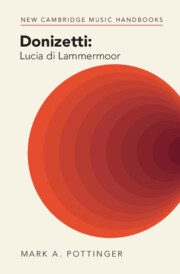
Donizetti: Lucia di Lammermoor
-
- Published online:
- 06 November 2025
- Print publication:
- 23 October 2025
1 - Source Studies
-
- Book:
- Donizetti: Lucia di Lammermoor
- Published online:
- 06 November 2025
- Print publication:
- 23 October 2025, pp 1-33
-
- Chapter
- Export citation

Ruin Ecology
- An Exercise in Environmental Imagination
-
- Published online:
- 13 October 2025
- Print publication:
- 06 November 2025
-
- Element
- Export citation
Chapter 5 - The Commodity Frontiers of World-Literature
- from Part II - Developments
-
-
- Book:
- Commodities and Literature
- Published online:
- 14 October 2025
- Print publication:
- 09 October 2025, pp 99-114
-
- Chapter
- Export citation
Chapter 3 - Absorption and the Satisfactions of Competence in the Gothic Novel
- from Part 2 - Popular Subgenres
-
- Book:
- Getting Lost in the Novel
- Published online:
- 26 July 2025
- Print publication:
- 07 August 2025, pp 91-111
-
- Chapter
- Export citation
48 - The Economy of the Later Roman Empire
- from Part V - Issues and Debates
-
- Book:
- The Cambridge Encyclopaedia of Late Antique Art and Archaeology
- Published online:
- 04 July 2025
- Print publication:
- 31 July 2025, pp 839-856
-
- Chapter
- Export citation
Part 2 - The Ludic
- from An Interlude
-
- Book:
- A Funny Thing
- Published online:
- 16 May 2025
- Print publication:
- 05 June 2025, pp 69-176
-
- Chapter
- Export citation
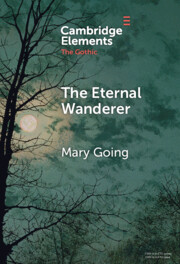
The Eternal Wanderer
- Christian Negotiations in the Gothic Mode
-
- Published online:
- 09 January 2025
- Print publication:
- 30 January 2025
-
- Element
- Export citation
Chapter 2 - Stethoscopic Fantasies
- from Part I
-
- Book:
- Acoustics in Nineteenth-Century Literature and Science
- Published online:
- 13 December 2024
- Print publication:
- 19 December 2024, pp 39-56
-
- Chapter
- Export citation
5 - Picturing the Musical Absolute
-
- Book:
- Romantic Music Aesthetics
- Published online:
- 22 November 2024
- Print publication:
- 21 November 2024, pp 124-149
-
- Chapter
- Export citation
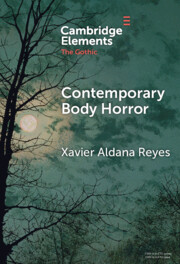
Contemporary Body Horror
-
- Published online:
- 14 November 2024
- Print publication:
- 05 December 2024
-
- Element
- Export citation
Chapter 18 - Ghosts
- from Part II - Social, Cultural, and Intellectual Contexts
-
-
- Book:
- Oliver Goldsmith in Context
- Published online:
- 28 November 2024
- Print publication:
- 07 November 2024, pp 149-158
-
- Chapter
- Export citation
16 - Satire and the Essay
- from Part II - The Great Age of the British Essay
-
-
- Book:
- The Cambridge History of the British Essay
- Published online:
- 31 October 2024
- Print publication:
- 04 July 2024, pp 231-245
-
- Chapter
- Export citation
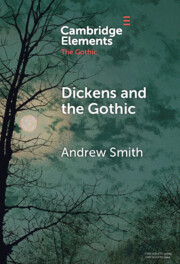
Dickens and the Gothic
-
- Published online:
- 18 June 2024
- Print publication:
- 17 October 2024
-
- Element
- Export citation
Chapter 9 - Romanticism
- from Part II - Pan-European Moods and Movements
-
-
- Book:
- Europe in British Literature and Culture
- Published online:
- 06 June 2024
- Print publication:
- 13 June 2024, pp 149-164
-
- Chapter
- Export citation
Chapter 10 - The Gothic
- from Part II - Pan-European Moods and Movements
-
-
- Book:
- Europe in British Literature and Culture
- Published online:
- 06 June 2024
- Print publication:
- 13 June 2024, pp 165-179
-
- Chapter
- Export citation
4 - Above and Below
- from Part II - Networks
-
-
- Book:
- The Cambridge Companion to Australian Poetry
- Published online:
- 06 June 2024
- Print publication:
- 13 June 2024, pp 73-88
-
- Chapter
- Export citation
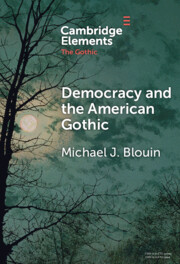
Democracy and the American Gothic
-
- Published online:
- 10 June 2024
- Print publication:
- 03 October 2024
-
- Element
- Export citation
Chapter 11 - Tennyson, Dickens, Poe, Browning, and the Brontës:Blackwood’s Magazine and ‘The Foreheads of a New Generation’
-
-
- Book:
- Nineteenth-Century Literature in Transition: The 1830s
- Published online:
- 30 May 2024
- Print publication:
- 06 June 2024, pp 241-262
-
- Chapter
- Export citation
